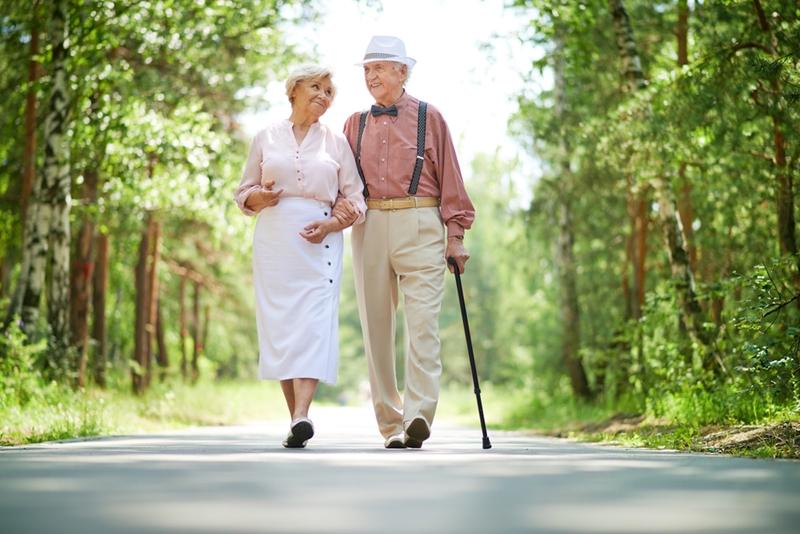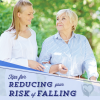While falling in your younger years may have meant a scraped knee and a bruised ego, taking a spill as an aging adult presents far more serious risks to your well-being. According to the National Council on Aging, falls are the No.1 cause behind both fatal and nonfatal injuries among people over the age of 65. Because many people have weaker balance and slower reaction times as they age, a simple slip could result in serious issues, like broken hips or head trauma.
Although it’s important to be vigilant about this issue at all times, it becomes even more relevant as the temperatures drop and ice begins to form on steps and walkways. If you’re concerned about falling this winter, use these tips to stay steady and standing.
Wear appropriate footwear
It’s no secret that some styles of shoes are better than others when it comes to getting around safely. If you’re sporting high heels, flip-flops, thick-soled shoes or slippers, you’re increasing your chances of falling. The Mayo Clinic explained that seniors should aim to wear shoes that fit well, are very supportive and feature non-slip soles. The source also noted that seniors should avoid walking around their homes in just socks or bare feet, as they’re more likely to slip without footwear.
Speak with your doctor
Seniors who are worried about their risk of falling can always benefit from having a discussion with their doctor. The U.S. Department of Health and Human Services explained that certain medications – even over-the-counter drugs – can negatively affect your balance, so you should always be candid with your physician about all the treatments you’re using, as he or she may be able to recommend a less risky option.
You may also want to visit your eye doctor to have your vision examined, as poor eyesight can contribute to trips and falls. The source recommended having an eye test at least once a year, as your vision is constantly evolving and may require new prescriptions fairly frequently. Women over the age of 65 should also ask about getting bone density tests, as osteoporosis can increase your risk of breaking bones.

Falling is a major risk in the senior community.
Exercise regularly
Think about establishing a workout routine as an important preventative maintenance step for your health. By increasing your strength now, you’ll be less likely to lose your balance later. If you do fall, being in good shape means you’ll be less likely to experience a life-threatening injury, and your body will have an easier time during the recovery process. Some exercises that can help you maintain strong balance include tai chi, walking and swimming.
If you consciously avoid physical activity because of your fear of falling, you should speak to your physician about the possibility of exercising with the help of a physical therapist. He or she can create a safe, controlled environment for you to effectively build up some strength.
Assess the safety of your home
A major part of preventing falls is reducing the number of household hazards that are present in your home. The National Council on Aging recommended enlisting a loved one and doing a thorough inspection of your house to make sure that it’s a safe space. First, confirm that there’s plenty of light throughout your residence, especially around the stairs. You should also make sure that there are easy-to-access lights next to your bed in case you need to get up in the middle of the night.
In addition to illuminating your staircases, you should make sure they’re equipped with two strong rails on either side. Lastly, you may want to add bars in your bathroom, both in the shower and next to the toilet. Installing a shower chair is another good idea.
If you found an error, highlight it and press Shift + Enter or click here to inform us.



